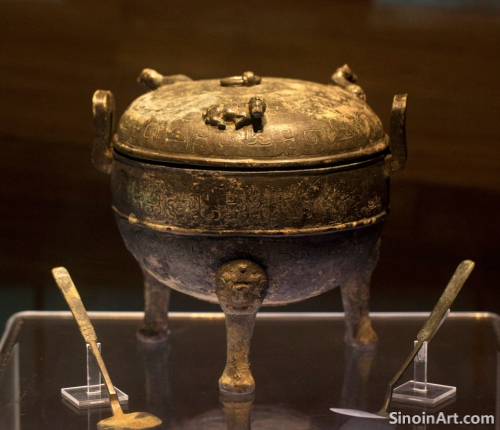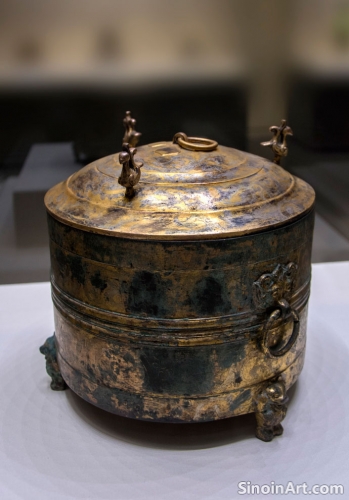The Influence of Bronze Ware on Ancient Chinese Music Theory and Practice
|
The creation and use of bronze instruments, particularly bells and chimes, had a significant impact on the development of ancient Chinese music theory and practice. The specific pitches, tunings, and arrangements of these instruments shaped the musical landscape of ancient China and helped to form its musical traditions. The influence of bronze instruments helped to shape the overall understanding of musical theory and its practical applications.  Bronze bells, often arranged in sets of varying sizes and pitches, allowed for the creation of complex melodies and harmonies, expanding the range and scope of musical expression. The ability to produce a wider range of notes helped to allow for a greater flexibility in musical expression. The innovation in musical instruments helped to push Chinese music theory and practice forward.  The precise tuning and design of bronze bells contributed to the development of a more systematized understanding of musical intervals and scales. The careful study of the design and tuning of these bells has helped us to better understand the development of musical theory. The scientific understanding of musical sound helped to shape the overall musical landscape.  Bronze instruments were used in rituals and ceremonies, providing a powerful means of connecting with the spiritual world, and underscoring the importance of music in religious practices. Music was an essential element in many of the spiritual and religious practices of the time. The use of bronze instruments in these contexts helped to make them a more integral part of these practices. The study of bronze instruments and their role in ancient Chinese music provides a unique perspective on the development of musical theory and the role of music in society. The careful analysis of these instruments helps to illuminate a central element of ancient Chinese culture. The integration of music into daily life helped to shape the overall culture of the era. |
Tag : bronze music instruments, Chinese music theory, ancient bells, bronze chimes, musical performance
Related information
- The Preservation of Bronze Ware: Balancing Scientific Methods with Artistic Understanding
- Bronze Ware and the Development of Ancient Chinese Legal Codes: Recording Laws and Reinforcing Authority
- The Role of Bronze in Ancient Chinese Funerary Practices: Preparing the Deceased for the Afterlife
- Regional Styles of Bronze Ware: Exploring the Diversity of Ancient China
- Bronze Ware and the Development of Ancient Chinese Architecture: Design Principles and Construction Tools
This article explores the preservation of Chinese bronze ware, highlighting the balancing act between scientific analysis and artistic understanding, the need for specialized techniques and ethical considerations, and also the need to provide access and ensure their long-term care.
This article explores the use of bronze in the development of ancient Chinese legal codes, highlighting its role in creating tablets, plaques, and vessels that were used to display laws, promote authority, and reinforce social order.
This article explores the role of bronze in ancient Chinese funerary practices, highlighting the inclusion of ritual vessels, weapons, mirrors and other objects, and how these items reveal beliefs about the afterlife and the preparation of the deceased for their journey.
This article explores regional styles of bronze ware in ancient China, highlighting the distinct forms, designs, and techniques found in different areas, including the Central Plains, the Yangtze Valley, and the northern regions, revealing the diversity of ancient Chinese culture.
This article explores the use of bronze in ancient Chinese architecture, highlighting its role in creating surveying tools, structural components, decorative elements, and demonstrating its importance in both design and construction.